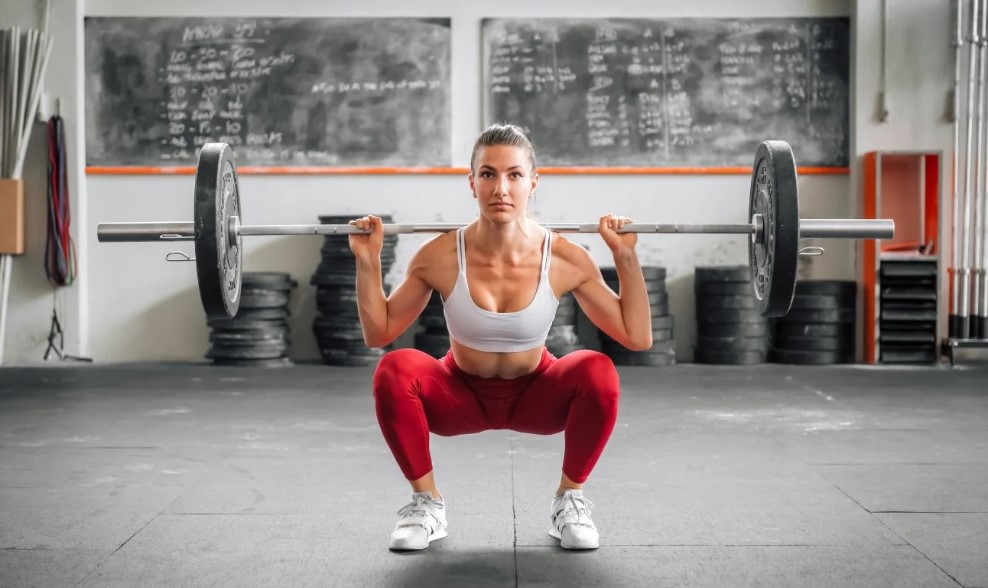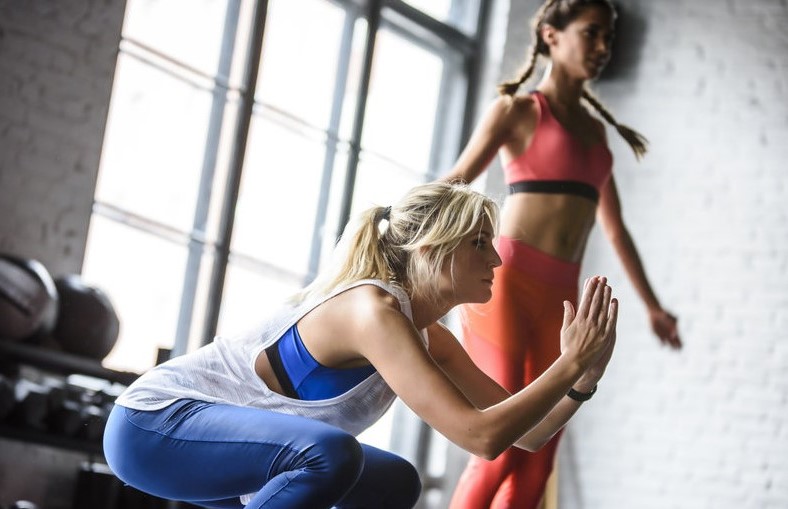Unveiling the Booty Myths
Debunking Squats and Butt Size
Discover the truth about butt size and squats with this comprehensive guide on debunking booty myths. Learn the facts, tips, and exercises to achieve your desired results. Unveiling the Booty Myths: Debunking Squats and Butt Size delves into the common misconceptions surrounding squats and their impact on butt size.
In today's fitness-conscious world, the desire for a well-shaped and firm booty has become a popular goal for many individuals. However, amidst the numerous advice and fitness trends, it's crucial to separate fact from fiction to achieve the desired results.
This article aims to provide readers with an informed perspective on the relationship between squats and butt size. We'll explore the science behind booty growth, the role of squats in shaping the glutes, and other factors influencing buttock appearance. Whether you're a fitness enthusiast or someone looking to enhance their physique, this article is your ultimate guide to understanding and achieving your booty goals.
Unveiling the Booty Myths: Debunking Squats and Butt Size
When it comes to booty myths, it's essential to clarify common misconceptions and focus on accurate information to make informed decisions about our fitness journey. In this section, we'll debunk some prevalent myths related to squats and butt size.
Myth 1: Squats Will Instantly Give You a Bigger Butt
Many people believe that performing squats regularly will automatically lead to a bigger and more rounded butt. However, the truth is more complex than this. Squats are undoubtedly an effective exercise for targeting the gluteal muscles, but the results vary from person to person.
Answer: The reality is that genetics, body composition, and individual differences play significant roles in how your glutes respond to squats. While squats can contribute to building muscle mass in the buttocks, achieving a bigger butt also depends on factors like diet, overall exercise routine, and consistency.
Myth 2: Squats Alone Are Enough to Shape Your Booty
Some fitness enthusiasts rely solely on squats as their go-to exercise for booty enhancement. While squats are undoubtedly beneficial, an all-encompassing approach is necessary for a well-rounded butt.
Answer: To get the best results, combine squats with a variety of glute-targeting exercises such as lunges, hip thrusts, deadlifts, and leg presses. Targeting the glutes from various angles and intensities will lead to better muscle activation and growth.
Myth 3: Only Heavy Squats Will Yield Results
There's a common belief that to see significant changes in butt size, one must lift heavy weights during squats. While heavy squats can be effective, they might not be suitable for everyone, especially beginners.
Answer: The most crucial aspect is achieving proper form and technique during squats, regardless of the weight lifted. Beginners should start with bodyweight squats or light weights and gradually progress to heavier loads as they gain strength and confidence.
Myth 4: Deep Squats Are Harmful to Your Knees
Some individuals avoid deep squats out of fear that they might be harmful to their knees. This myth stems from a misunderstanding of proper squat mechanics.
Answer: When performed correctly, deep squats can be safe and highly beneficial for both glute development and knee health. Engaging the glutes and maintaining proper alignment during the squat movement can reduce unnecessary stress on the knees.
Myth 5: Squats Are Only for Women
A prevalent misconception is that squats are exclusively for women and that men should avoid them to prevent developing a feminine figure.
Answer: Squats are a functional and fundamental exercise suitable for both men and women. They are crucial for building lower body strength and can help individuals of all genders achieve their fitness goals.
The Science Behind Glute Growth and Squats
Understanding the science behind glute growth is essential to tailor your workout routine effectively. In this section, we'll explore the biological factors influencing the development of gluteal muscles and the role squats play in this process.
How Do Glute Muscles Grow?
The gluteal muscles, comprising the gluteus maximus, gluteus medius, and gluteus minimus, are the largest muscles in the human body. Their growth is primarily influenced by resistance training, such as weightlifting and bodyweight exercises.
Answer: When you perform exercises like squats, the gluteal muscles undergo microscopic tears. During the recovery process, the muscles repair themselves, becoming stronger and more substantial. This adaptation is known as hypertrophy and is essential for muscle growth.
The Role of Squats in Glute Development
Squats are a compound exercise that targets multiple muscle groups, including the glutes. When performed correctly, squats engage the gluteal muscles and provide the stimulus needed for growth.
Answer: The key to maximizing glute activation during squats lies in proper form. Focus on sitting back into the squat, keeping your knees aligned with your toes, and engaging your glutes throughout the movement.
Other Factors Affecting Glute Size
While squats are an integral part of any glute-building routine, other factors can influence the size and shape of your booty.
Answer: Nutrition plays a crucial role in muscle development. Consuming an adequate amount of protein and overall calories is essential to support muscle growth and repair. Additionally, ensuring sufficient rest and recovery allows your glutes time to heal and grow.
Tips for Effective Squats and Glute Workouts
To make the most of your workouts and achieve your desired results, consider implementing the following tips for effective squats and glute-focused training.
1. Warm-Up Thoroughly
Before diving into squats or any glute exercises, warm up properly to increase blood flow to the muscles and reduce the risk of injury.
Answer: Perform dynamic stretches and activation exercises such as leg swings, hip circles, and glute bridges to prepare your body for the workout.
2. Mind-Muscle Connection
During squats and other glute exercises, focus on establishing a strong mind-muscle connection.
Answer: Concentrate on engaging your glutes throughout the entire movement, ensuring they are the primary muscles driving the exercise.
3. Vary Your Squat Stance
Experiment with different squat stances to target various parts of your glutes.
Answer: Wide-stance squats emphasize the outer glutes, while narrow-stance squats target the inner glutes. Alternate between the two to achieve balanced glute development.
4. Incorporate Resistance
Progressively challenge your glutes by adding resistance to your workouts.
Answer: Utilize dumbbells, barbells, resistance bands, or kettlebells during squats and other glute-focused exercises to intensify the workout and promote muscle growth.
5. Don't Forget Recovery
Allow your glutes sufficient time to recover and grow stronger between workouts.
Answer: Adequate rest is crucial for muscle repair and development. Avoid overtraining and give your glutes at least 48 hours of rest between intense workouts.
Unveiling the Booty Myths: Debunking Squats and Butt Size - FAQs
1. Can I achieve a bigger butt by doing only squats?
While squats are an effective exercise for glute development, relying solely on squats might not lead to significant butt size increase. For optimal results, combine squats with a variety of glute-targeting exercises.
2. Are deep squats bad for my knees?
When performed with proper form, deep squats are generally safe and can even help improve knee stability. Focus on engaging your glutes and maintaining good alignment to avoid unnecessary stress on the knees.
3. How often should I perform glute workouts?
The frequency of your glute workouts depends on your fitness level and recovery capacity. Generally, aim for 2-4 glute-focused sessions per week, with adequate rest days in between.
4. Is it necessary to lift heavy weights during squats?
While lifting heavy weights can be beneficial for building strength, it's not necessary for everyone, especially beginners. Proper form and technique are more crucial than the weight lifted.
5. Can men do squats without developing a feminine figure?
Squats are a beneficial exercise for both men and women and do not cause a feminine figure in men. They are essential for overall lower body strength and muscle development.
6. How long does it take to see results from glute workouts?
The time it takes to see noticeable results from glute workouts varies from person to person. Factors like genetics, diet, consistency, and exercise intensity all play a role. Generally, visible changes may take several weeks or months.
Conclusion
Unveiling the Booty Myths: Debunking Squats and Butt Size has shed light on the truths and misconceptions surrounding squats and their impact on butt size. We've explored the science behind glute growth, the role of squats in shaping the glutes, and essential tips for effective glute workouts.
Remember, achieving your desired booty goals requires a well-rounded approach, including targeted exercises, proper nutrition, and sufficient rest. Embrace your unique journey, stay consistent, and celebrate every step toward a stronger and shapelier booty.



.png)








0 Comments:
Post a Comment